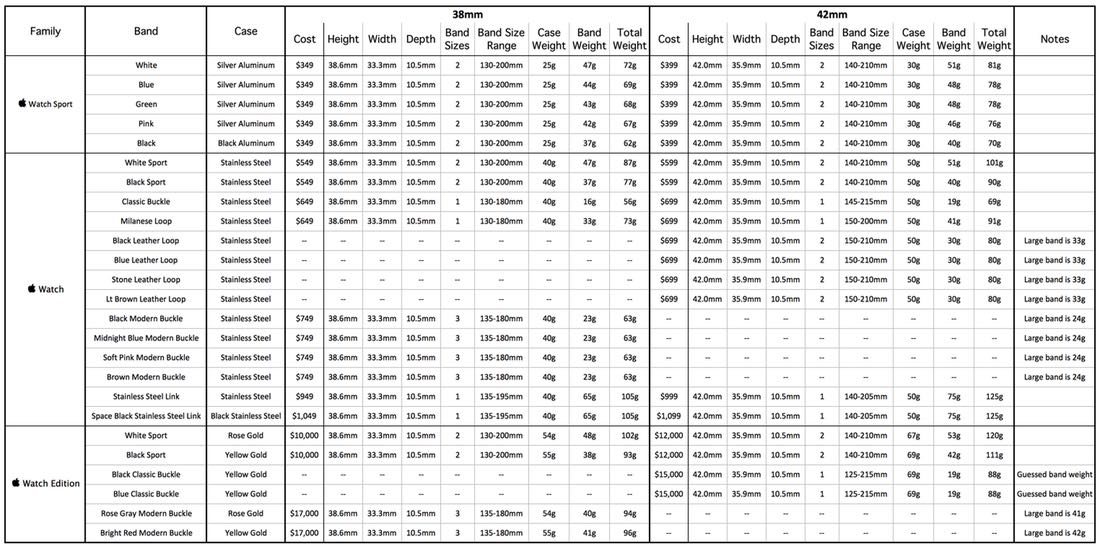Let me get this out of the way first: I am not a watch guy. I own a watch I use for running. I own a few dress watches that I used to put on when I had a big fancy business meeting to attend. But those haven't seen the light of day in decades. So I have zero interest in owning an Apple Watch. (I might be interested if you could use one to replace the phone, but it's clearly an accessory device.)
But I am fascinated by this new business Apple's going into; the sheer number of products and prices is pretty amazing: By my count, Apple will be shipping 38 separate models of watches. There's a gallery page at Apple's site where you can page through all of the watches, and get the details on each specific model. You can also view the watches in the store, where you can find pricing info.
Update: Kirk McElhearn pointed me to Apple's Watch Sizing Guide, which contains information on band lengths. I've added two columns (Band Sizes, Band Size Range) to reflect these values.
Both of these solutions, though, require lots of paging and scrolling to get all the details. I was curious as to how all the watches compared, so I pulled data from those sources and made one massive spreadsheet:

If you'd like to download the file and look at it in Excel (or Numbers or whatever), here it is. Feel free to share; I merely compiled the publicly-available data and don't really care what you do with it (though leaving the attribution in place would be nice).
There are some interesting facts hidden in all that data:
- The lightest watch isn't any of the Watch Sport versions. Instead, it's the Classic Buckle Apple Watch (56 grams), which is a full six grams lighter than the next-lightest watch.
- The heaviest watch—at a whopping 125 grams—is the Apple Watch Stainless Steel link (42mm in either stainless or space black). That may not sound like much, but 125 grams is over four ounces, or to put it another way, it's like wearing a quarter-pound hamburger on your wrist (weight before cooking, of course). It's also 2.2x as heavy as the lightest watch.
- Color adds weight: in the Watch Sport category, the bands' weight varies by color. Black is 37g, then pink (42g), green (43g), blue (44g) and white (47g). So somewhat oddly, to go light, go with black.
- Band size only changes weight by one gram (modern buckle) or three grams (leather loop).
- In the Apple Watch family, you can't get a 38mm leather loop, or a 42mm modern buckle. I have no idea why they restricted these choices; it seems odd.
- In the Apple Watch Edition family, there's no 38mm classic buckle, and no 42mm modern buckle. Again, this seems an odd restriction.
I don't have any plans on keeping this current as Apple (inevitably) adds more watches to the mix, but it was interesting seeing all the "day one" models in one spot.
